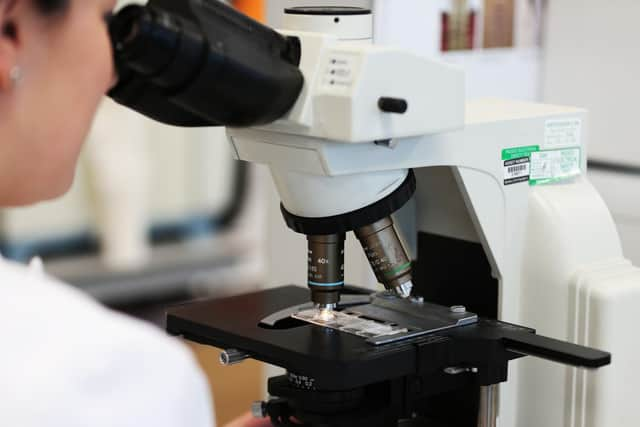Researchers from Leeds identify way of helping patients struggling to beat aggressive bone cancer
and live on Freeview channel 276
For around one in three patients diagnosed with Ewing sarcoma in just one part of the body – known as localised cancer - current treatments are ineffective. The new research, funded by the Bone Cancer Research Trust and the Ewing’s Sarcoma Research Trust, opens up the possibility of offering these patients additional treatment that could increase their chance of survival.
The University of Leeds team of researchers were able to identify the particular cancer cells – known as cancer stem-like cells – in Ewing sarcoma that are resistant to chemotherapy and responsible for recurrence of the disease.
Advertisement
Hide AdAdvertisement
Hide AdIn the laboratory, the researchers found a protein called neurexin-1 at much higher levels in the cancer stem-like cells, and in turn, then found patients whose tumours had higher levels of this protein were more likely to see the disease return and less likely to survive.


In Ewing sarcoma, chemotherapy, radiotherapy and surgery increase long term survival in between 55 and 65% of patients who are diagnosed with localised cancer. However, the other patients see their disease progress and suffer a relapse. For these patients, the outcomes are as poor as those diagnosed when the cancer has already spread.
Working with surgeons from the Royal Orthopaedic Hospital in Birmingham and the Translational and Clinical Research Institute at the University of Newcastle, the team were able to use samples of tumour tissue from Ewing sarcoma patients and grow the cells in the laboratory.
Dr Elizabeth Roundhill, Research Fellow at the University of Leeds, explained: “Tumours are a mix of different cells which interact with each other and with cells of the surrounding environment to grow and spread. However, cancer stem-like cells are different: they can divide and multiply independently of other cells in the tumour and can initiate new tumour spread and growth. These are the particularly dangerous cells we wanted to find.”
Advertisement
Hide AdAdvertisement
Hide AdFrom each sample, the team took approximately 1000 single cells to identify those that were able to grow and were resistant to current chemotherapy. Using state-of-the-art RNA sequencing, the researchers were able to see that neurexin-1 was expressed at high levels in these cancer stem-like cells.
The team are already working with colleagues in Spain, Italy and Switzerland on a large study comparing neurexin-1 with other possible markers, to validate the best way to identify patients who need treatment that is more intensive. They hope to have the results of this study later this year. If the study confirms their findings, the next stage would be to use neurexin-1 to select patients for treatment in a clinical trial.
